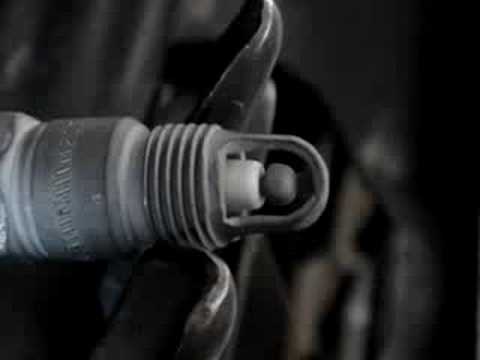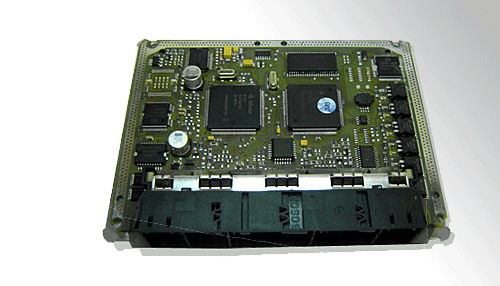A few weeks ago we covered some of the details of bringing your daily driver back to showroom new performance with a few DIY tips. Something anyone with a reasonable aptitude and a basic set of tools could perform.
Today we are going to dig a bit deeper to see what options are out there for enthusiast to turn the special vehicle into something unique, perhaps a wolf in sheep’s clothing. In general, the nature of these enhancements will increase horsepower and performance but may also void your warranty. In other words think before you act, it may make little sense to void a power train warranty if you when you can concentrate on other aspects of the build first. Remember to first get together a game plan and plan out your steps
Allowing That Air To Come In
One of the first and easiest things you can do simply reduce the restriction of the factory air intake. Better breathing leads to a more effective fuel burn and will add up down the road. There are a variety aftermarket cold air boxes out there, but you will do best by sticking to a reputable product produced by a company that specializes in tuning your brand car. Expect to drop about $250 up on a quality air intake that will not only give you a few extra ponies but will be the building block for the future.

Expel Those Spent Gases
Just as you want to maximize the amount of air you can bring into the engine, you will need to also be able to expel it as well. A low restriction exhaust is key to removing the spent gases from your motor and give you the chance to add a deeper sports car sound as well. When working here, restrain from the old school approach of ditching the catalytic convertor, and go a high performance unit that will allow you to realize a performance gain and keep you street legal. Stainless steel exhausts can run anywhere from $500 to $1000 but they will last the lifetime of the vehicle. In short a good investment.
.jpg)
Maximizing The Burn
Now that you have freed the flow of gasses into and out of the the engine you want to maximize your ability to burn the fuel and air mixture. Again we are placing building blocks in place that will benefit us further down the road. High performance coils, wires and plugs go a long way to getting you there. Conventional wisdom used to be the bigger the spark across the electrode the better the combustion. The 80’s and 90’s were filled various designs that had multiple lateral electrodes surrounding the central electrode. These excessively complex plugs looked cool but in practice were a nightmare to gap correctly and frequently fouled.

The conventional approach today is a back to basics a single lateral electrode but a very with a fine wire central electrode. Why? It seems we were all wrong back then, and were ignoring a basic fact. Since we are arcing the same amount of current across the base of the plug, the smaller the electrode increased the spark temperature dramatically. The hotter the spark the faster and cleaner the fuel mixture ignites and burns. This explains why the simple replacement of plugs can go a long way to improving performance. Again stick with a major maker here. I use Bosch Fine Wire Plugs with excellent results in both my CC and RX. Actually, I think the RX runs better with them than the stock type OEM plugs.

Putting It All Together With A New Brain
Everything so far has been simple bolt ons that are helping get the best flow and burn from your engine. But the next step can really unlock the potential of a motor. The Electronic Control Unit (ECU) is the heart of the brain of your motor. Everything aspect of the engine from the fuel mixture, timing and even air flow is controlled by this central processor. If you have a turbocharged engine similar to a 2.0 liter VW or Audi a simple reflash (reprogram) of the ECU will provide an immediate boost in power and performance. Simply put, in these motors a $500 investment can provide 45 to 50 horsepower to the wheels through higher boost pressures and better timing. Add this with a set of injectors, and the basics we have added in the prior steps and the horsepower gains can close in on 50%. Not bad when you consider you gained 100hp with $2500 of investment.

Of course in a non turbocharged vehicle a ECU flash will not be so dramatic due to lack of a turbo, but still 15 to 20 horsepower by better programming is still a good deal. Not all ECU units can be reflashed easily though (Toyota for example), however a secondary ECU may be available that plugins inline with the factory unit and can provide a noticeable improvement. Basically if you can’t reprogram, you can modify the parameters after leaving the ECU enroute to components. Where there is a will there is a way.

Can I Really Do This?
Obviously there are other things you can do (IE: a bigger turbo, camshafts, manifold changes) But by sticking to the basic intake, ignition system, and exhaust systems you only get by with primarily basic skills to get the job done as long as you take your time. If you add a secondary ECU typically these simply require a few steps and a quick disconnect of the battery to perform the task. A ECU reflash will require a professional to perform, but typically can be doned in a few hours by the technician. All in all, with the high tech abilities of the modern day engine all you may need to do realize true potential is to spend a few weekends on the car maximizing that hidden potential.
This post is brought to you by the new OE Fine Wire Spark Plug line from Bosch.